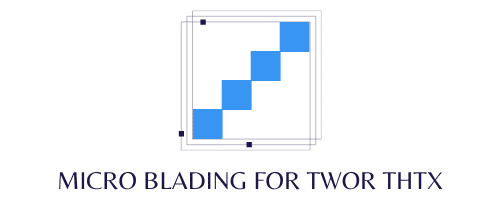Can Mixed-Use Developments Be the Solution for Urban Housing Demand?

We live in a rapidly evolving world, where the pace of change can often be dizzying, especially when it comes to urban development. As our cities continue to grow and evolve, the need for innovative, sustainable solutions to meet housing demands is becoming increasingly important. One exciting trend that could hold the answer is the development of mixed-use estates. These developments, which combine residential, commercial, and communal spaces within a single building or neighbourhood, have the potential to transform urban living and meet the housing needs of the future.
The Concept of Mixed-Use Developments
Cities have always been places of mixed usage, where the boundaries between working, living, and leisure are blurred. However, the traditional model of urban development, with distinct zones for residential, commercial, and industrial use, has often isolated these elements from one another. Mixed-use developments aim to break down these barriers and create more integrated, sustainable communities.
A découvrir également : What Are the Risks of Real Estate Investment in Areas Prone to Wildfires?
Mixed-use developments are not a new concept. Indeed, they can be traced back to ancient Rome and medieval European cities, where shops, homes, and public spaces coexisted side by side. However, the idea has gained fresh impetus in recent years, as urban planners and developers have sought to create more sustainable, liveable communities.
These developments can take many forms, from a single building with ground-floor retail space and apartments above, to large-scale projects that encompass entire neighbourhoods. The key is the integration of different uses within a single space, fostering a sense of community and making efficient use of land.
En parallèle : What Are the Economic and Social Benefits of Revitalizing Abandoned Urban Areas?
The Benefits of Mixed-Use Developments
There are many potential benefits to mixed-use developments for both residents and the wider community. By integrating commercial and residential spaces, these developments can create vibrant, dynamic neighbourhoods that offer a mix of amenities and services.
For residents, mixed-use developments can provide a higher quality of life. Having shops, restaurants, offices, and other amenities within walking distance of your home reduces the need for car usage, leading to healthier, more active lifestyles. This proximity also allows for more social interaction, creating a stronger sense of community.
For the city as a whole, mixed-use developments can stimulate economic growth and revitalization. They can attract businesses and investment, create jobs, and increase property values. They also make efficient use of land and infrastructure, helping to prevent urban sprawl and reduce the environmental impact of development.
The Challenges of Mixed-Use Developments
Despite their potential benefits, mixed-use developments are not without their challenges. The complexity of these projects can make them difficult to plan and implement. They require a careful balance of uses to ensure that the needs of all residents and businesses are met, and that the development is financially viable.
Issues such as noise and privacy can also be a concern in mixed-use developments. If not carefully managed, the proximity of commercial and residential spaces can lead to conflicts. Furthermore, these developments can sometimes be seen as gentrifying forces, pushing out low-income residents and small businesses in favour of more affluent tenants and larger companies.
Future of Mixed-Use Developments
Despite these challenges, the future of mixed-use developments looks promising. As our cities continue to grow and change, the need for innovative, sustainable solutions is only likely to increase. And as society becomes more aware of the importance of sustainability and community, the appeal of mixed-use developments is likely to grow.
Already, we are seeing some exciting examples of mixed-use developments around the world. From regenerated industrial sites to new-build projects, these developments are reshaping our urban landscapes and offering a glimpse of the future of city living.
In conclusion, while mixed-use developments are not a panacea for all urban development challenges, they represent a promising and exciting opportunity. By integrating residential, commercial, and communal spaces, they offer the potential to create more sustainable, liveable cities, and meet the growing demand for urban housing.
Mixed-Use Developments: Applications and Examples
Mixed-use developments are not confined to any single, rigid format. They are highly adaptable and can be tailored to meet the specific needs and characteristics of a given urban environment. From compact, high-rise buildings in city centers to sprawling, low-rise complexes in suburban areas, mixed-use developments can take on numerous shapes and forms.
One common form is the "vertical mixed-use" building, where different uses are stacked on top of each other. Typically, retail or commercial spaces occupy the ground floor, while apartments or offices are located on the higher floors. This type of development is particularly suited to high-density urban environments, where land is at a premium.
Another form is the "horizontal mixed-use" complex, where different uses are spread out across a wider area. This type of development often includes a mix of residential, commercial, and green spaces, creating a mini-city within a city. It can be ideal for suburban areas or redeveloped industrial sites, where there is more space available.
Across the globe, we can see many inspiring examples of mixed-use developments. They demonstrate the vast potential of this approach to urban planning. For instance, the Hudson Yards project in New York, which combines residential, commercial and recreational spaces within a single development. Another example is the King’s Cross redevelopment in London, which has transformed a former industrial area into a vibrant new neighborhood, complete with homes, offices, shops, and parks.
The Role of Mixed-Use Developments in Affordable Housing
Affordability is a significant challenge in many urban environments. There are concerns that mixed-use developments might contribute to gentrification, pushing out lower-income residents. However, if properly managed, they can play a critical role in providing affordable housing and promoting social equity.
Incorporating affordable housing into mixed-use developments can create more diverse, inclusive communities. It allows lower-income residents to live closer to jobs, amenities, and public transportation, reducing their living costs and improving their quality of life. This approach, known as "inclusionary zoning", has been used successfully in cities like San Francisco and New York.
Mixed-use developments can also provide a source of funding for affordable housing. In some cases, developers may be required to include a certain percentage of affordable units in their projects, or to contribute to a fund for affordable housing, in return for planning permissions.
However, it is crucial that affordable housing is integrated into mixed-use developments in a thoughtful and sensitive manner. It should not be relegated to the least desirable parts of the building or complex. Instead, it should be distributed evenly, ensuring that all residents can enjoy the benefits of living in a vibrant, mixed-use community.
Conclusion: The Future of Urban Living
In the fast-paced world of urban development, mixed-use projects offer a compelling solution to the challenge of meeting growing housing demand. By integrating residential, commercial, and communal spaces, these developments can create more sustainable, liveable cities.
While they are not without their challenges, such as balancing the needs of different users and managing potential conflicts, these can be overcome with careful planning and design. As our understanding and experience of mixed-use developments grow, we can expect to see more innovative, exciting projects that push the boundaries of what is possible in urban living.
Moreover, mixed-use developments can play an important role in providing affordable housing and promoting social equity. By integrating affordable units into their projects, developers can help to create more diverse, inclusive communities and contribute to the broader goal of smart growth.
As we look to the future, it is clear that mixed-use developments have an important role to play in shaping our urban environments. They represent a promising frontier in urban planning, offering a vision of a future where people can live, work, and play within a single, integrated community. It’s a future that’s not only exciting but is also within our grasp.
